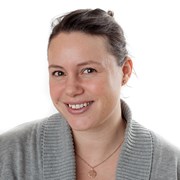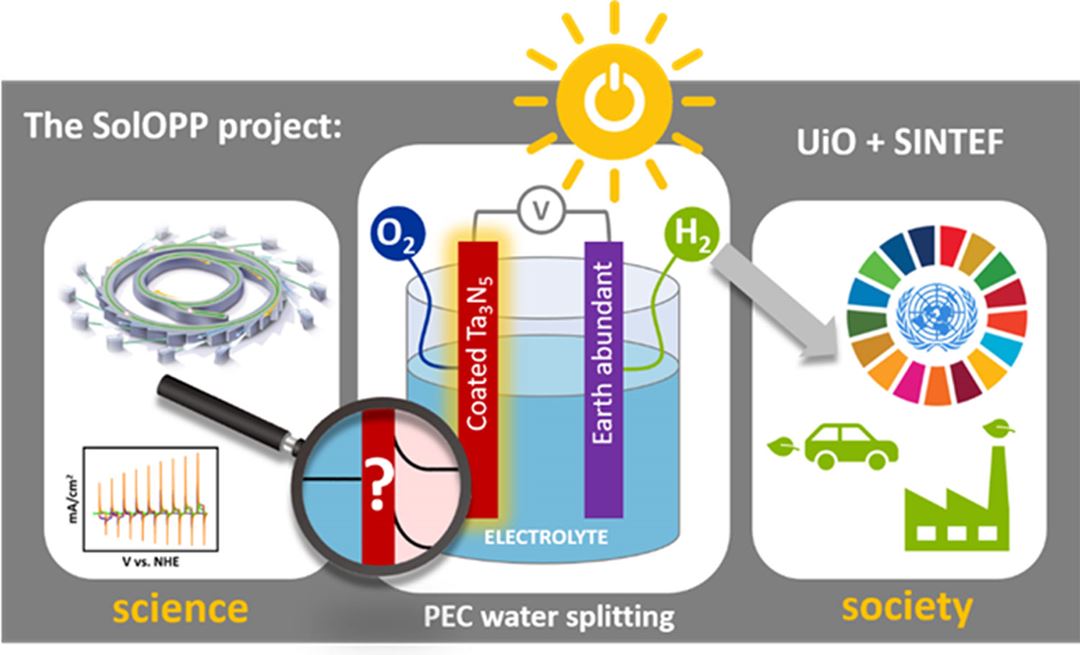Solar driven water splitting is an elegant way to address the intermittent nature of sunlight by storing it in the form of chemicals bonds, in this case as renewable hydrogen gas. A key component in a light-driven water electrolysis cell is the anode electrode, which must be activated by sunlight and at the same time release oxygen gas by the oxidation of water. The other electrode, the cathode, is responsible for releasing the hydrogen gas by the reduction of water. The primary losses in such photoelectrochemical (PEC) cells come from the anode electrode, as the oxygen evolution reaction (OER) is a complicated four electron reaction and moreover, the oxidative conditions during operation degrade the anode electrode materials. In SolOPP we study and develop a Ta3N5 photo-anode, which is one of the most efficient materials for PEC cells. However, the material degrades over time in contact during PEC water splitting. We will surface modify Ta3N5 with the main aim to increase its durability but also gain fundamental understanding of the corrosion processes during operation. In order to do so, we will set up experiments at international laboratories such as DTU, Lund and Cambridge where we can study the material properties when in contact with water during light exposure and the OER. These experiments will closely resemble the conditions the materials will be exposed to when in use. We can therefore gain insight and extract important knowledge that can be used to further develop a more stable photoanode material.
Project team:
- Annett Thøgersen (Project leader), SINTEF Industry
- Ingvild Thue Jensen, SINTEF Industry
- Martin Fleissner Sunding, SINTEF Industry
- Ingeborg-Helene Svenum, SINTEF Industry
- Øystein Dahl, SINTEF Industry
- Mathieu Grandcolas, SINTEF Industry
- Athanasios Chatzitakis, UiO
Project type: Researcher project - NANO2021

The project is funded by the Research Council of Norway under the "NANO2021 - Nanoteknologi, mikroteknologi og avanserte materialer" programme
Project partners: University of Oslo

